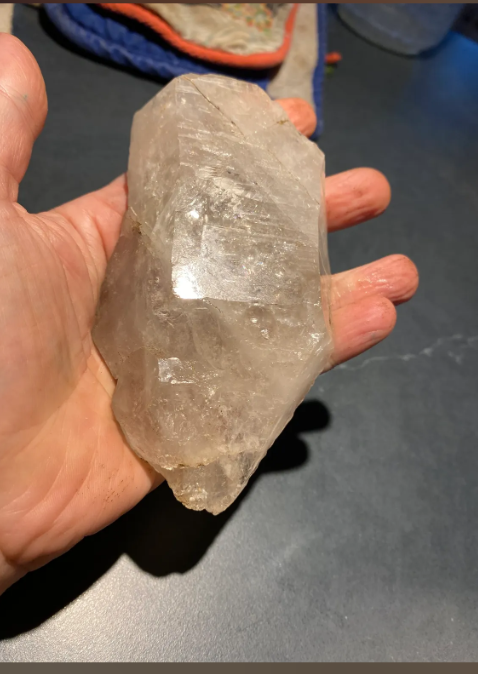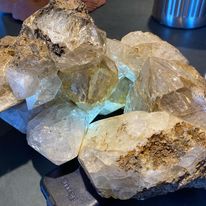Synopsis of the June Program by Bill Stephens: New Mines and Quartz Crystal Habits in the Herkimer Area, New York
by Andy Thompson, MSDC Secretary

Our September presenter, Bill Stephens, is not only a licensed Professional Geologist and life-long mineral collector, but also an environmental engineer whose company provides a full range of services including surveying throughout the Mid-Atlantic Region.
This diverse background allows Bill to apply his expertise and the tools of his trade to develop an in-depth portrait and contour map of two never-before analyzed new mining areas, both privately owned: the Mohawk Valley Mineral Mining (MVMM) site and a neighboring area known as Area 52.
Bill is working closely with the owners of both mines and said he hopes to complete his initial analysis of these sites sufficiently so that he can present his findings at the annual meeting of the Friends of Mineralogy in Tucson, AZ at its annual meeting in February of 2023.
Bill’s Presentation to MSDC: A Work in Progress
Bill has several months of analytic work ahead of him before he will be able to finalize his presentation for the Tucson presentation. His talk to MSDC in early September was, he said, a dry run and included some of his initial observations. But even given this early-stage overview, his talk was eye-opening and compelling from at least two points of view: the extraordinary abundance of the small and large Herkimer crystals available at the MVMM new mining area and the promising insights provided by his analytic tools such as contour mapping.
He shared aspects of the geology of the area as well as of the sub-culture shared by the collectors. On the lighter side, the latter included a new vocabulary that has been developing to categorize and name the Herkimer crystals based on their size and characteristics. For example, a golf-ball size crystal, of course, is a “Palmer” and “goonies” are giant crystals, which, for many collectors, are the most highly treasured. The “rainbows” are self-explanatory.

On the more scientific side, contour mapping, using satellite data to draw lines as tight at ten feet apart, allows for identifying where the crystals have and have not been found in the MVMM area which includes terraced hillsides consisting of Little Falls dolostone. This technology, of course, could be used on other mining sites as well, including the Area 52 mine across the river that has similar geological and topographical characteristics.
Bill also shared many insights pertaining to the genesis of the crystals, most of which have high levels of transparency. Many crystals have water inclusions which indicates their origin in a watery environment. As a consequence, over time, that inclusion presents a danger to their integrity and survival. Because many of the crystal deposits are close to the surface, Bill said that during cold weather, they tend to experience cracking and fragmentation. Some of the crystals have smoky inclusions which some believe are an indication of iron minerals. Others have inclusions which exhibit a yellow color which is not due to the presence of a liquid as such, but of a thin, dried deposition of oil on interior fractures. This color points to the crystals’ origin as including the presence of petroleum.

A Warning for Collectors
One caveat Bill suggested was that mineral collectors need to be wary of the older and widely advertised Herkimer mines that are largely tourist traps and do not actually have any mines. In contrast, the mines he described and is actively analyzing are located in Fulton County, New York and are a genre of “new mines” that he will discuss more fully during his Tucson presentation in February 2023.
Presentation Not Available on MSDC's Website
Given Bill’s presentation to MSDC represents his early research, he preferred that we not record it and make it available on YouTube, as we often do for our club's other monthly talks. For the same reason, we thought it best not to include extensive photos or illustrations Bill used during his presentation to MSDC. When his work on these mines is further along, he will then be able to share it more extensively. We are grateful for the excellent insights he generously shared with us.
The video clips Bill shared of collectors discovering and pulling beautiful goonies from the shallow topsoil was a sight to behold. Stay tuned. There will be more to hear from Bill’s analyses of these new mining areas.


